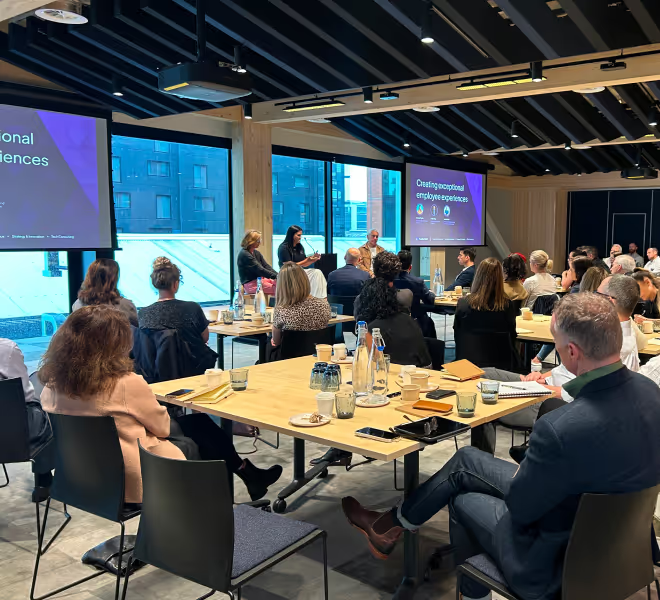Responding to megatrends needs a good strategy
As business leaders it’s easy to get wrapped up in the day-to-day operations of our businesses, stuck in a continual cycle of optimisation as we improve product and service offerings in search of yet more incremental revenue growth. This focus on ‘exploiting’ the existing business model may well deliver incremental revenue and market share gains, but it’s unlikely to deliver big step changes in competitiveness and market share. These big step changes typically result from organisations anticipating the impact of the large external changes beyond the control of any single organisation,big unstoppable megatrends driving change at a macro level.
Fundamentally altering your growth trajectory comes down to good strategy. Organisations need to identify the big drivers and megatrends that are likely to have the biggest impact on their industries in the longer term. These unstoppable forces are bearing down on all industries, sectors and business models and have the power to reshape value chains, competitive positions, regulation and, most importantly, customer expectations. Identifying which of these megatrends are most likely to impact your industry is critical in laying the foundation for strategy development and future growth.
The world is awash with megatrends from climate change, geopolitical instability, technology developments and shifting population demographics. These waves of change can be exploited by organisations to disrupt markets and create and capture new value - value that is likely to change what you sell, how you sell it and who you sell it to.
Exploiting a wave of change requires leaders to predict how they will impact their industry and then channel resources and innovation effort toward positions that create new value and a sustainable source of competitive advantage. Our responsibility as leaders is to work with our teams to develop responses to these waves of change that use our organisation’s knowledge, resources and energy.
Diagnosing the challenge
Assess and prioritise the megatrends
Assessing the megatrends can be an overwhelming exercise. You have to identify and prioritise the megatrends most likely to have the biggest impact on your industry. This isn’t a short-term exercise, you should look at the trends most likely to drive significant change for your business across a three to ten year horizon (anything shorter than that should form part of your current BAU planning process).
Define the challenges or opportunities
Identify and define the challenges or opportunities these megatrends are likely to trigger. Explain the nature of the challenges or opportunities your business is likely to face for each trend you’ve prioritised in a succinct paragraph. Importantly, this is not (yet) how your organisation should respond, but what it is responding to.
A good diagnosis simplifies the complexity of the trend and predicts how it may change the competitive position of your business. It must also recognise that challenges and opportunities could play out in any part of your business model. For example, consider declining demand, regulatory changes, changes in distribution, product substitution or new parts of the value chain emerging – the areas of potential impact are almost endless.
Response development: a statement of intent
Once you have diagnosed the challenges that are most likely to impact your business, you can begin to develop a series of responses. As Rumelt writes in ‘Good Strategy Bad Strategy’, the response is a “guiding policy that outlines an overall approach for overcoming the challenges highlighted by the diagnosis. It is “guiding” because it channels action in certain directions without defining exactly what shall be done” - it’s a statement of intent, not an implementation plan. Consider several different potential responses so you can determine which response is likely to be the best response for your business. This exercise should be considered as strategic ideation where multiple ideas are developed for subsequent testing and refinement.
It’s important to use a structured ideation process. To increase your chances of success avoid groupthink and minimise cognitive bias (your industry knowledge is both your biggest strength but also your biggest weakness) and don’t fall in love with the first ‘right’ idea. The subsequent evaluation of these responses will force you to make hard strategic choices relating to where you’ll need to adapt to remain relevant and retain or enhance your competitive advantage.
Learning from Apple
When Steve Jobs returned to Apple in 1998 Apple was in trouble, close to bankruptcy and being outcompeted. Jobs took a novel approach to turning the company around. He recognised that exploiting the current business model or pushing the various levers he had at his disposal was not going to be enough to restore Apple to market leadership in personal computing. What he did do was focus on the sources and barriers to success in his industry.
During this period, Rumelt interviewed Jobs and asked him what his turnaround strategy would be. In response, Jobs smiled and said “I am going to wait for the next big thing”.
Jobs initially developed the iPod but then identified several waves of change that could trigger new opportunities for Apple. He focused on three critical emerging technologies that had the potential for Apple to create and capture completely new value streams.
- Multi-touch screen interfaces
- Mobile internet communication devices
- Digital camera lens technology
Jobs then channelled Apple’s energy into exploring how Apple could leverage these waves of change into a consumer product which resulted in the eventual development of the category killing iPhone. The external trends Jobs focused on enabled Apple to transform itself into the world’s most valuable company and triggered significant market share loss for incumbents across mobile phones (Nokia, Ericsson), mobile email (Palm), mobile music (Sony) and digital cameras (Sony, Panasonic).
Keep an eye on the future
In an ever-changing business landscape shaped by powerful megatrends, leaders must keep an eye to the future and understand the forces that can and will reshape their industries. By diagnosing the most impactful challenges and opportunities these trends will create, then developing intentional strategic responses, organisations can get ahead of market shifts and channel innovation in directions that will allow them to capitalise on these waves of change. Much like Jobs leveraged emerging technologies into the revolutionary iPhone, business leaders today must dedicate the time and effort to consider the changes that are coming and the courage to deploy their resources in order to ride these waves of change to drive meaningful growth.






